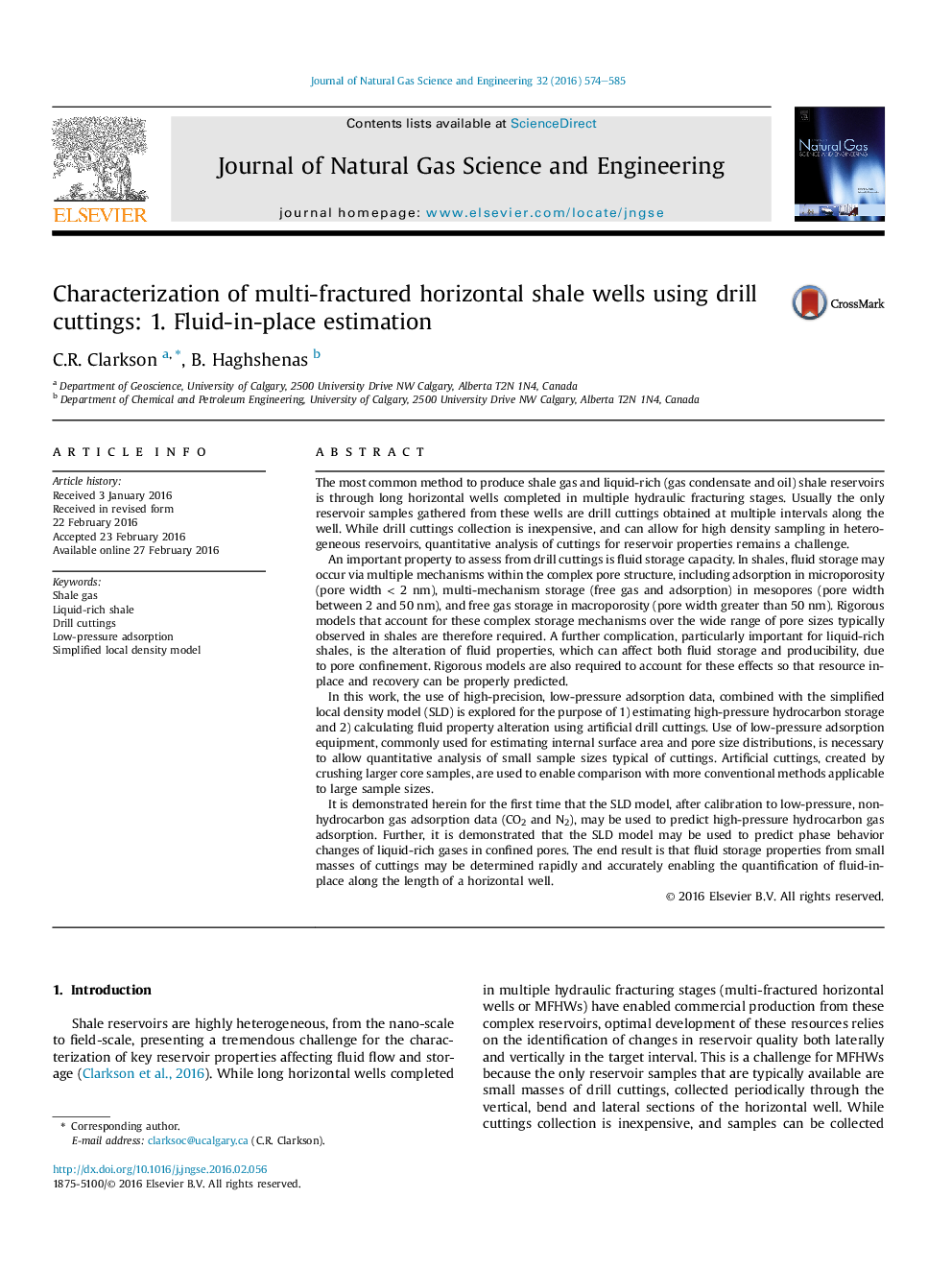| کد مقاله | کد نشریه | سال انتشار | مقاله انگلیسی | نسخه تمام متن |
|---|---|---|---|---|
| 1757257 | 1523009 | 2016 | 12 صفحه PDF | دانلود رایگان |
• A new procedure for estimating gas content from shale cuttings is presented.
• Low-pressure adsorption is used to derive pore structural information for use in the simplified local density (SLD) model.
• The SLD model is used to predict high-pressure hydrocarbon adsorption.
• The SLD model is used to predict phase envelope alteration for gas condensate fluids due to pore confinement effects.
• Artificial drill cuttings (crushed core plug samples) are used to test the new procedure.
The most common method to produce shale gas and liquid-rich (gas condensate and oil) shale reservoirs is through long horizontal wells completed in multiple hydraulic fracturing stages. Usually the only reservoir samples gathered from these wells are drill cuttings obtained at multiple intervals along the well. While drill cuttings collection is inexpensive, and can allow for high density sampling in heterogeneous reservoirs, quantitative analysis of cuttings for reservoir properties remains a challenge.An important property to assess from drill cuttings is fluid storage capacity. In shales, fluid storage may occur via multiple mechanisms within the complex pore structure, including adsorption in microporosity (pore width < 2 nm), multi-mechanism storage (free gas and adsorption) in mesopores (pore width between 2 and 50 nm), and free gas storage in macroporosity (pore width greater than 50 nm). Rigorous models that account for these complex storage mechanisms over the wide range of pore sizes typically observed in shales are therefore required. A further complication, particularly important for liquid-rich shales, is the alteration of fluid properties, which can affect both fluid storage and producibility, due to pore confinement. Rigorous models are also required to account for these effects so that resource in-place and recovery can be properly predicted.In this work, the use of high-precision, low-pressure adsorption data, combined with the simplified local density model (SLD) is explored for the purpose of 1) estimating high-pressure hydrocarbon storage and 2) calculating fluid property alteration using artificial drill cuttings. Use of low-pressure adsorption equipment, commonly used for estimating internal surface area and pore size distributions, is necessary to allow quantitative analysis of small sample sizes typical of cuttings. Artificial cuttings, created by crushing larger core samples, are used to enable comparison with more conventional methods applicable to large sample sizes.It is demonstrated herein for the first time that the SLD model, after calibration to low-pressure, non-hydrocarbon gas adsorption data (CO2 and N2), may be used to predict high-pressure hydrocarbon gas adsorption. Further, it is demonstrated that the SLD model may be used to predict phase behavior changes of liquid-rich gases in confined pores. The end result is that fluid storage properties from small masses of cuttings may be determined rapidly and accurately enabling the quantification of fluid-in-place along the length of a horizontal well.
Journal: Journal of Natural Gas Science and Engineering - Volume 32, May 2016, Pages 574–585
